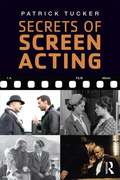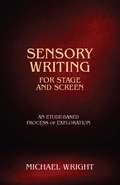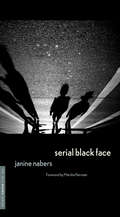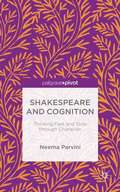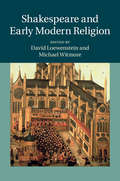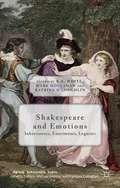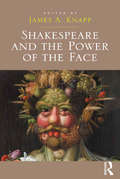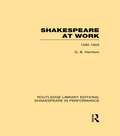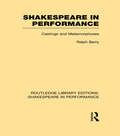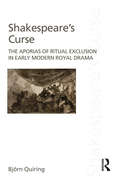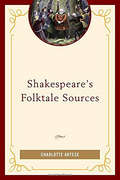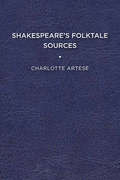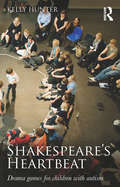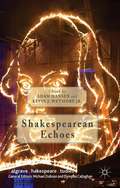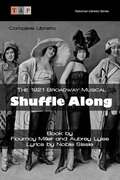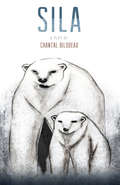- Table View
- List View
Secrets of Screen Acting Third Edition
by Patrick TuckerWhen it was first published in 1993, Secrets of Screen Acting broke new ground in explaining how acting for the camera is different from acting on stage. Reaction time is altered, physical timing and placement are reconceived, and the proportions of the digital frame itself become the measure of all things, so the director must conceptualize each image in terms of this new rectangle and actors must 'fit' into the frame. Based on a revolutionary non-Method approach to acting, this book shows what actually works: how an actor, an announcer--anyone working in front of the cameras--gives excellent performances on screen.
Sensory Writing for Stage and Screen: An Etude-Based Process of Exploration
by Michael WrightThrough a series of systematic explorations across a wide range of scenarios, Sensory Writing for Stage and Screen offers script writers exercises for attending to their own sensory experiences as a means to exploring the sensory experiences—and worlds—of the characters they create.
Serial Black Face
by Marsha Norman Janine NabersThe 2014 winner of the Yale Drama Series "The play does not have a tragic ending, though you will be certain that it must. But it is a tragic story. It is the tragedy of lives lived without hope of deliverance. . . . I will leave you to read the play and determine how on earth we get to a satisfying ending to this tragic tale of a woman without a chance. But that ending is the genius of Nabers's work, her faith in the ability of people with no chance, to find one. "-Marsha Norman, from the Foreword The year is 1979 and a serial killer in Atlanta is abducting and murdering young black children. Against a backdrop of fear and uncertainty, playwright Janine Nabers explores the emotional battleground where an African-American single mother wars with her teenage daughter, each coping in her own way with personal tragedy and loss. The volatility of their situation is intensified when a severely damaged and devastatingly handsome stranger becomes an integral part of their lives. "Serial Black Face" is the seventh winner of the DC Horn Foundation/Yale Drama Series Prize, selected by Pulitzer Prize-winning playwright Marsha Norman. At once startling, engrossing, suspenseful, and exhilarating, Nabers's powerful drama employs a real-life nightmare, the Atlanta Child Murders of the late 1970s, to incisively examine human frailty and the prickly complexities of a mother-daughter relationship. A stunning theatrical work, both thoughtful and profoundly moving, "Serial Black Face" is richly deserving of this year's prize. "
Shakespeare and Cognition: Thinking Fast and Slow through Character
by Neema ParviniShakespeare and Cognition.
Shakespeare and Early Modern Religion
by David Loewenstein Michael WitmoreWritten by an international team of literary scholars and historians, this collaborative volume illuminates the diversity of early modern religious beliefs and practices in Shakespeare's England, and considers how religious culture is imaginatively reanimated in Shakespeare's plays. Fourteen new essays explore the creative ways Shakespeare engaged with the multifaceted dimensions of Protestantism, Catholicism, non-Christian religions including Judaism and Islam, and secular perspectives, considering plays such as Hamlet, Julius Caesar, King John, King Lear, Macbeth, Measure for Measure, A Midsummer Night's Dream and The Winter's Tale. The collection is of great interest to readers of Shakespeare studies, early modern literature, religious studies, and early modern history.
Shakespeare and Emotions
by Katrina O’loughlin R. S. White Mark HoulahanThis collection of original essays by established and emerging scholars approaches the works of Shakespeare from the topical perspective of the History of Emotions. What emerges is not a single paradigm or 'grand narrative', but a variety of approaches, ranging from the historical to the interpretive, illuminating the primacy of emotions in Shakespearean scholarship and theatre. The section 'Emotional Inheritances' looks back to Shakespeare's sources and cultural backgrounds, showing that some aspects of his representations of emotions come from the classics and medieval world; 'Shakespearean Enactments' presents essays that analyse a range of emotional states and issues in the plays themselves; while 'Legacies and Re-Enactments' traces aspects of his influence through later times and down to the present day. Taken together these diverse but related essays present a kaleidoscope of suggestive approaches to the potentially endless subject of emotions in Shakespeare.
Shakespeare and Textual Studies
by Sonia Massai Kidnie Margaret JaneShakespeare and Textual Studies gathers contributions from the leading specialists in the fields of manuscript and textual studies, book history, editing, and digital humanities to provide a comprehensive reassessment of how manuscript, print and digital practices have shaped the body of works that we now call 'Shakespeare'. This cutting-edge collection identifies the legacies of previous theories and places special emphasis on the most recent developments in the editing of Shakespeare since the 'turn to materialism' in the late twentieth century. Providing a wide-ranging overview of current approaches and debates, the book explores Shakespeare's poems and plays in light of new evidence, engaging scholars, editors, and book historians in conversations about the recovery of early composition and publication, and the ongoing appropriation and transmission of Shakespeare's works through new technologies.
Shakespeare and the Idea of Apocrypha
by Peter KirwanIn addition to the thirty-six plays of the First Folio, some eighty plays have been attributed in whole or part to William Shakespeare, yet most are rarely read, performed or discussed. This book, the first to confront the implications of the 'Shakespeare Apocrypha', asks how and why these plays have historically been excluded from the canon. Innovatively combining approaches from book history, theatre history, attribution studies and canon theory, Peter Kirwan unveils the historical assumptions and principles that shaped the construction of the Shakespeare canon. Case studies treat plays such as Sir Thomas More, Edward III, Arden of Faversham, Mucedorus, Double Falsehood and A Yorkshire Tragedy, showing how the plays' contested 'Shakespearean' status has shaped their fortunes. Kirwan's book rethinks the impact of authorial canons on the treatment of anonymous and disputed plays.
Shakespeare and the Natural World
by Tom MacfaulExploring the rich range of meanings that Shakespeare finds in the natural world, this book fuses ecocritical approaches to Renaissance literature with recent thinking about the significance of religion in Shakespeare's plays. MacFaul offers a clear introduction to some of the key problems in Renaissance natural philosophy and their relationship to Reformation theology, with individual chapters focusing on the role of animals in Shakespeare's universe, the representation of rural life, and the way in which humans' consumption of natural materials transforms their destinies. These discussions enable powerful new readings of Shakespeare's plays, including A Midsummer Night's Dream, As You Like It, King Lear, Macbeth, The Tempest, The Winter's Tale, and the history plays. Proposing that Shakespeare's representation of the relationship between man and nature anticipated that of the Romantics, this volume will interest scholars of Shakespeare studies, Renaissance drama and literature, and ecocritical studies of Shakespeare.
Shakespeare and the Power of the Face
by James A. KnappThroughout his plays, Shakespeare placed an extraordinary emphasis on the power of the face to reveal or conceal moral character and emotion, repeatedly inviting the audience to attend carefully to facial features and expressions. The essays collected here disclose that an attention to the power of the face in Shakespeare’s England helps explain moments when Shakespeare’s language of the self becomes intertwined with his language of the face. As the range of these essays demonstrates, an attention to Shakespeare’s treatment of faces has implications for our understanding of the historical and cultural context in which he wrote, as well as the significance of the face for the ongoing interpretation and production of the plays. Engaging with a variety of critical strands that have emerged from the so-called turn to the body, the contributors to this volume argue that Shakespeare’s invitation to look to the face for clues to inner character is not an invitation to seek a static text beneath an external image, but rather to experience the power of the face to initiate reflection, judgment, and action. The evidence of the plays suggests that Shakespeare understood that this experience was extremely complex and mysterious. By turning attention to the face, the collection offers important new analyses of a key feature of Shakespeare’s dramatic attention to the part of the body that garnered the most commentary in early modern England. By bringing together critics interested in material culture studies with those focused on philosophies of self and other and historians and theorists of performance, Shakespeare and the Power of the Face constitutes a significant contribution to our growing understanding of attitudes towards embodiment in Shakespeare’s England.
Shakespeare and the Visual Imagination
by Stuart SillarsShakespeare's knowledge of the practices of visual art, its fundamental concepts and the surrounding debates is clear from his earliest works. This book explores this relationship, showing how key works develop visual compositions as elements of dramatic movement, construction of ideas, and reflections on the artifice of theatre and language. The Taming of the Shrew, Love's Labour's Lost, Richard II and A Midsummer Night's Dream are explored in detail, offering new insights into their forms, themes, and place in European traditions. The use of emblems is examined in Titus Andronicus and As You Like It; studies of Venus and Adonis, some sonnets and The Rape of Lucrece reveal different but related visual aspects; a later chapter suggests how the new relation between seeing and soliloquy in The Rape of Lucrece is developed in other plays. Extensively illustrated, the book explores Shakespeare's assimilation and exploration of visual traditions in structure, theme and idea throughout the canon.
Shakespeare at Work, 1592-1603 (Routledge Library Editions: Shakespeare in Performance)
by G.B. HarrisonShakespeare against the background of his times, his world of the theatre and his dramatic development through the last years of Elizabeth’s reign. Originally published in 1933 and republished in 1958, this great work is an imagining, in plain narrative, of the life of Shakespeare backed with evidence of the history of the stage. Whatever wider significances modern critics distill from Shakespeare’s plays, it remains an elementary fact that he wrote plays to interest and entertain his contemporaries and this book takes a look at the immediate interests of his audience and how his work responded to them.
Shakespeare in Performance: Castings and Metamorphoses (Routledge Library Editions: Shakespeare in Performance)
by Ralph BerryThese studies take stage history as a means of knowing the play. Half of the studies deal with casting - doubling, chorus and the crowd, the star of Hamlet and Measure for Measure. Then the transformations of dramatis personae are analyzed and The Tempest is viewed through the changing relationships of Prospero, Ariel and Caliban. Some of Shakespeare’s most original strategies for audience control are studied, such as Cordelia's asides in King Lear, Richard II’s subversive laughter and the scenic alternation of pleasure and duty in Henry IV. Performance is the realization of identity. The book draws on major productions up to 1992, just before the book was originally published.
Shakespeare on Screen
by Sarah Hatchuel Vienne-Guerrin NathalieThe first volume in the re-launched series Shakespeare on Screen is devoted to Othello, offering up-to-date coverage of recent screen versions as well as new critical essays on older, canonical films. An international cast of authors explores not only productions from the USA and UK, but also translations, adaptations and appropriations in Qu#65533;bec, Italy, India, Brazil and Mexico. The volume takes part in the ceaseless cultural investigation of what Othello says about Shakespeare, the past and our present time, supported by an invaluable film-bibliography. Accompanying free online resources include a fuller version of the bibliography and an additional contribution on YouTube versions of Othello. This book will be a valuable resource for students, scholars and teachers of film studies and Shakespeare studies.
Shakespeare on Screen Othello
by Hatchuel, Sarah and Vienne-Guerrin, Nathalie Sarah Hatchuel Nathalie Vienne-Guerrin"The first volume in the re-launched series Shakespeare on Screen is devoted to Othello, offering up-to-date coverage of recent screen versions as well as new critical essays on older, canonical films. An international cast of authors explores not only productions from the USA and UK, but also translations, adaptations and appropriations in Québec, Italy, India, Brazil and Mexico. The volume takes part in the ceaseless cultural investigation of what Othello says about Shakespeare, the past and our present time, supported by an invaluable film-bibliography. Accompanying free online resources include a fuller version of the bibliography and an additional contribution on YouTube versions of Othello. This book will be a valuable resource for students, scholars and teachers of film studies and Shakespeare studies"--
Shakespeare on the University Stage
by Andrew James HartleyFeaturing essays from seventeen international scholars, this exciting new collection is the first sustained study of Shakespeare on the university and college stage. Treating the subject both historically and globally, the essays describe theatrical conditions that fit neither the professional nor the amateur models and show how student performances provide valuable vehicles for artistic construction and intellectual analysis. The book redresses the neglect of this distinctive form of Shakespeare performance, opening up new ways of thinking about the nature and value of university production and its ability to draw unique audiences. Looking at productions across the world - from Asia to Europe and North America - it will interest scholars as well as upper-level students in areas such as Shakespeare studies, performance studies and theatre history.
Shakespeare's Curse
by Bjoern QuiringConceptualizing the curse as the representation of a foundational, mythical violence that is embedded within juridical discourse, Shakespeare’s Curse pursues a reading of Richard III, King John, and King Lear in order to analyse the persistence of imprecations in the discourses of modernity. Shakespeare wrote during a period that was transformative in the development of juridical thinking. However, taking up the relationship between theatre, theology and law, Bjoern Quiring argues that the curse was not eliminated from legal discourses during this modernization of jurisprudence; rather, it persisted and to this day continues to haunt numerous speech acts. Drawing on the work of Derrida, Lacan, Walter Benjamin and Giorgio Agamben, among others, Quiring analyses the performativity of the curse, and tracks its power through the juristic themes that are pursued within Shakespeare’s plays – such as sovereignty, legitimacy, succession, obligation, exception, and natural law. Thus, this book provides an original and important insight into early modern legal developments, as well as a fresh perspective on some of Shakespeare’s best-known works. A fascinating interdisciplinary study, this book will interest students and scholars of Law, Literature, and History.
Shakespeare's Folktale Sources
by Charlotte ArteseShakespeare’s Folktale Sources argues that seven plays—The Taming of the Shrew, Titus Andronicus, The Merry Wives of Windsor, The Merchant of Venice, All’s Well that Ends Well, Measure for Measure, and Cymbeline—derive one or more of their plots directly from folktales. In most cases, scholars have accepted one literary version of the folktale as a source. Recognizing that the same story has circulated orally and occurs in other medieval and early modern written versions allows for new readings of the plays. By acknowledging that a play’s source story circulated in multiple forms, we can see how the playwright was engaging his audience on common ground, retelling a story that may have been familiar to many of them, even the illiterate. We can also view the folktale play as a Shakespearean genre, defined by source as the chronicle histories are, that spans and traces the course of Shakespeare’s career. The fact that Shakespeare reworked folktales so frequently also changes the way we see the history of the literary folk- or fairy-tale, which is usually thought to bypass England and move from Italian novella collections to eighteenth-century French salons. Each chapter concludes with a bibliography listing versions of each folktale source as a resource for further research and teaching. Published by University of Delaware Press. Distributed worldwide by Rutgers University Press.
Shakespeare's Folktale Sources
by Charlotte ArteseShakespeare’s Folktale Sources argues that seven plays—The Taming of the Shrew, Titus Andronicus, The Merry Wives of Windsor, The Merchant of Venice, All’s Well that Ends Well, Measure for Measure, and Cymbeline—derive one or more of their plots directly from folktales. In most cases, scholars have accepted one literary version of the folktale as a source. Recognizing that the same story has circulated orally and occurs in other medieval and early modern written versions allows for new readings of the plays. By acknowledging that a play’s source story circulated in multiple forms, we can see how the playwright was engaging his audience on common ground, retelling a story that may have been familiar to many of them, even the illiterate. We can also view the folktale play as a Shakespearean genre, defined by source as the chronicle histories are, that spans and traces the course of Shakespeare’s career. The fact that Shakespeare reworked folktales so frequently also changes the way we see the history of the literary folk- or fairy-tale, which is usually thought to bypass England and move from Italian novella collections to eighteenth-century French salons. Each chapter concludes with a bibliography listing versions of each folktale source as a resource for further research and teaching. Published by University of Delaware Press. Distributed worldwide by Rutgers University Press.
Shakespeare's Heartbeat: Drama games for children with autism
by Kelly HunterChildren on the autistic spectrum experience varying degrees of difficulties; all of which can be understood as a disassociation of mind and body. Expressing feelings, making eye contact, keeping a steady heartbeat and recognizing faces are all part of the autism dilemma which can be poetically explored by Shakespeare. Over ten years, Hunter worked with children on all points of the spectrum, developing drama games for the specific purpose of combatting autism. These unique games, derived from specific moments in the plays, shed new light on how to teach Shakespeare to children, using the drama as an exploration of how it feels to be alive. Shakespeare’s Heartbeat is a step-by-step guide, detailing how to demonstrate, play and share these sensory games. The book includes: Games based on A Midsummer Night’s Dream Games based on The Tempest Tips and advice for playing one-on-one with the children An afterword describing Hunter’s journey from performer and practitioner to creator of this work. Shakespeare’s poetic definitions of seeing, thinking and loving reveal the very processes that children with autism find so difficult to achieve. This book provides an indispensable learning tool for those wishing to encourage children’s eye contact and facial expression, improve their spatial awareness and language skills and introduce them to imaginative play.
Shakespeare's Tragedies: All That Matters (All That Matters)
by Michael ScottIn Shakespeare's Tragedies: All That Matters, Michael Scott explores and explains the secrets that have made Shakespeare's tragedies so enduring that they continue to be performed, watched and studied by millions of people every year. Professor Scott concentrates on the four great tragedies - Hamlet, King Lear, Othello and Macbeth - and builds an argument based around Shakespeare's use of language to prompt the audience's imagination and thought. This original little book, and its companion volume, Shakespeare's Comedies, will help you understand each of the plays in the context of its oeuvre and the changing concept of Shakespearean tragedy across the centuries.Appealing to both students and general readers, this book gives a fascinating introduction to Shakespeare's tragedies - and what matters most about them.
Shakespeare, Origins and Originality (Shakespeare Survey vol. #68)
by Peter Holland1. Shakespeare's anecdotal character Margreta de Grazia 2. What is a source? Or, how Shakespeare read His Marlowe Laurie Maguire and Emma Smith 3. Imitation or collaboration? Marlowe and the early Shakespeare canon Gary Taylor and John V. Nance 4. 'O Jephthah, judge of Israel': from original to accreted meanings in Hamlet's allusion Péter Dávidházi 5. The elephants' graveyard revisited: Shakespeare at work in Antony and Cleopatra, Romeo and Juliet and All's Well That Ends Well Catherine Belsey 6. 'Every like is not the same': translating Shakespeare in Spanish today Alfredo Michel Modenessi 7. Reading originals by the light of translations Tom Cheesman 8. 'My name is Will': Shakespeare's sonnets and autobiography Stanley Wells 9. Tracings and data in The Tempest: author, world and representation Janet Clare 10. Shakespearean gesture: narrative and iconography Farah Karim-Cooper 11. The origin of the late Renaissance dramatic convention of self-addressed speech James Hirsh 12. Reading in their present: early readers and the origins of Shakespearian appropriation Jean-Christophe Mayer 13. Shakespeare out of time (or, Hugo takes dictation from the beyond) Ruth Morse 14. Betrayal, derail, or a thin veil: the myth of origin Bi-qi Beatrice Lei 15. Global Shakespeares, affective histories, cultural memories Jyotsna G. Singh and Abdulhamit Arvas 16. Spinach and tobacco: making Shakespearian unoriginals Peter Holland 17. Ren Fest Shakespeare: the cosplay Bard Andrew James Hartley 18. 'Dead as earth': contemporary topicality and myths of origin in King Lear and The Shadow King Kate Flaherty 19. Shakespeare and the idea of national theatres Michael Dobson 20. John Rice and the boys of the Jacobean King's Men David Kathman 21. Shakespeare's Irish lives: the politics of biography Andrew Murphy 22. Shakespeare in blockaded Berlin: the 1948 'Elizabethan Festival' Bettina Boecker 23. Connecting the Globe: actors, audience and entrainment Robert Shaughnessy 24. 'Freetown!': Shakespeare and social flourishing Ewan Fernie 25. We'll always have Paris: the third household and the 'bed of death' in Romeo and Juliet Nicholas Crawford 26. The 'serpent of old Nile': Cleopatra and the pragmatics of reported speech Jelena Marelj 27. 'This insubstantial pageant faded': the drama of semiotic anxiety in The Tempest Lynn Forest-Hill 28. Shakespeare performances in England 2014 Carol Chillington Rutter 29. Professional Shakespeare productions in the British Isles, January–December 2013 James Shaw The year's contribution to Shakespeare studies: 1. Critical studies Charlotte Scott 2. Shakespeare in performance Russell Jackson 3. Editions and textual studies Peter Kirwan.
Shakespearean Echoes
by Jr Adam Hansen Kevin J. WetmoreShakespearean Echoes assembles a global cast of established and emerging scholars to explore new connections between Shakespeare and contemporary culture, reflecting the complexities and conflicts of Shakespeare's current international afterlife. Shakespearean echoes appear in diverse genres and cultural forms, from pop music of the seventies through the writing of Toni Morrison, to the book and film of Let the Right One In. Chapters deal with digital Shakespeare, Shakespeare on the web, and the powerful echoes of Shakespeare to be found in such seemingly unrelated texts as the television program Lost, sports broadcasts, and Game of Thrones. Within those discussions certain Shakespearean texts (such as Othello or Romeo and Juliet) recur; likewise certain modes of popular culture (such as science fiction) reappear. The collection helps readers navigate the diversity of Shakespeare's legacy.
Shuffle Along: The 1921 Broadway Musical Complete Libretto
by Flournoy Miller Aubrey Lyles Noble SissleComplete libretto to the 1921 ground breaking musical. One of the most significant musicals of the 20th Century, “Shuffle Along” was a rarity, written, produced, and acted wholly by African Americans. For the first time racially diverse audiences celebrated the uniqueness of this musical together. While the New York Times praised Eubie Blake "swinging and infectious score," it panned the rest of the production “as extremely crude—in writing, playing and direction." That didn’t matter. New Yorkers, including George Gershwin and Fanny Brice, flocked to it and it soon became the most popular production of the season with record breaking sales. Its influences were felt throughout the 1920s when "Shuffle Along" type musicals became all the vogue.
Sila: The Arctic Cycle
by Chantal BilodeauIn Inuit mythology, "sila" means air, climate, or breath. Bilodeau's play of the same name examines the competing interests shaping the future of the Canadian Arctic and local Inuit population. <P><P>Equal parts Inuit myth and contemporary Arctic policy, the play Sila features puppetry, spoken-word poetry, and three different languages (English, French, and Inuktitut). There is more afoot in the Arctic than one might think. On Baffin Island in the territory of Nunavut, eight characters - including a climatologist, an Inuit activist and her daughter, and two polar bears - find their values challenged as they grapple with a rapidly changing environment and world. Sila captures the fragility of life and the interconnectedness of lives, both human and animal, and reveals in gleaming tones that telling the stories of everyday challenges - especially raising children and maintaining family ties - is always more powerful than reciting facts and figures. Our changing climate will have a significant impact on how we organize ourselves. Nowhere is this more apparent than in the Arctic, where warming temperatures are displacing entire ecosystems. The Arctic Cycle - eight plays that examine the impact of climate change on the eight countries of the Arctic - poignantly addresses this issue. Sila is the first play of The Arctic Cycle. With its large-as-life polar bear puppets, the play is evocative and mesmerizing, beautifully blurring the boundaries between folklore and science.
